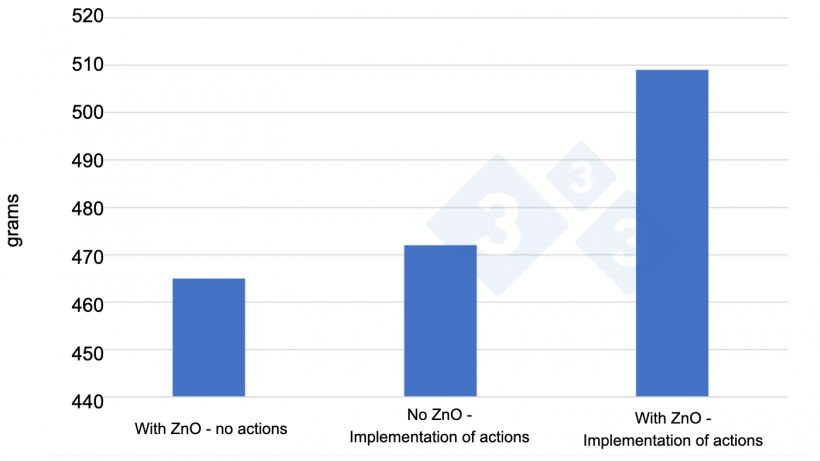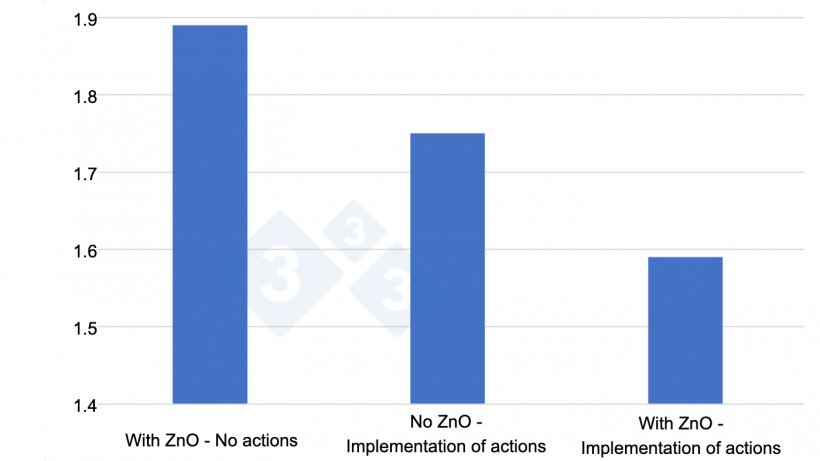High levels of zinc oxide (ZnO) are an effective weapon against the gastrointestinal bacteria that frequently cause diarrhoea in piglets during the weaning transition. Starting June 2022, however, the EU will enforce a ban on the use of ZnO in weaner diets – a decision that has launched an intensive race to find an alternative solution.
The weaning transition is one of the most challenging periods in a pig’s life, associated with stress, poor growth and diarrhoea. Solutions have typically revolved around optimising the feed, which is why the search for a ZnO alternative initially focused on finding an ingredient that could serve as a 1:1 replacement.

But, as the EU deadline approaches, it is becoming increasingly clear that the solution cannot be found in a feed ingredient alone. Instead, ZnO replacement requires a more complex solution where health status, management and hygiene must be combined with feeding strategies and feed solutions in an overall solution to weaning diarrhoea (see Figure 1). Practical experiences in Danish pig production provide evidence of this.

The nature of modern weaning
Under natural conditions, weaning is a long-term process. However, in modern production, it takes place early and abruptly. The sudden separation from the sow is accompanied by the need to adapt to a new eating and drinking pattern, mixing with other piglets and establishing a new hierarchy. At the same time, the piglet must cope with the change from sow milk to plant-based solid feed, containing more complex proteins and carbohydrates. This causes great psychological stress.
These events often result in reduced feed intake in the days immediately after weaning and can cause anorexia in the piglets. This is critical because the weaning age of the pig – around three to four weeks – coincides with the fact that the pig's organs, particularly the gastrointestinal (GI) tract, are still developing and not yet fully functional.
Balancing the feed
A constant nutrient supply is necessary to support GI tract development and maintain the mucosa. If the intestine is empty, the villi and a large part of the cells responsible for the digestive and absorption processes will degenerate. Diarrhoea and reduced growth are the frequent outcome.
Feeding is a balancing act, as feed components and their digestibility must be continuously adapted to the pig’s changing needs during growth. A wide range of feed additives are available to support pig digestive systems and counteract the negative impact of the weaning transition.
Practical experiences from Denmark
From 2020 to 2021, we have undertaken six-month-long projects with several pig producers and their vets in collaboration with SEGES (the Danish Swine Research Center). The objective has been to find solutions to the challenges for home mixers in phasing out ZnO.
Based on the needs of each farm, the projects have implemented new feed strategies and initiatives within hygiene and management practices. The learnings are clear. Focus on the feed is vital, both in terms of crude protein level and the choice of protein sources, where easily digestible proteins are highly important. But the feed alone does not ensure success. Strict hygiene procedures and getting piglets active to ensure a high feed intake are also key.
Table 1. Focus points in the farrowing and weaning unit.
| Farrowing unit | Weaning unit |
|---|---|
| Hygiene (washing, disinfection, drying) | |
| Getting piglets active making sure the piglets get up and move to the feed dispensers to ensure feed intake, e.g. by increasing the no. of daily feedings. | |
| Open and adjusted feed dispensers to ensure feed intake Open feed dispensers secure that feed is available for the piglets. The dispensers should be adjusted according to the age of the piglets. |
|
| Feeding strategy (choice of raw materials) | |
The participating pig farms have been able to phase out ZnO without notably raising the level of antibiotic treatment – use of feed antibiotics to promote growth is not permitted in Denmark or the rest of the EU. Several of the farms have also experienced a productivity increase after the medical zinc was removed from the feed (see example from one farmer in figures 2 and 3).








